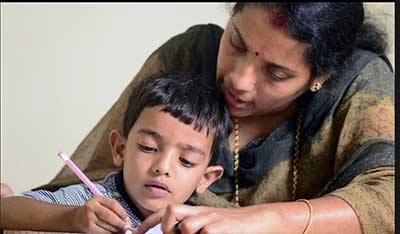Relevance: GS-2: Government policies and interventions for development in various sectors and issues arising out of their design and implementation.
Key Phrases: International Deloitte Survey, Good Quality Childcare, Counselling and Mentoring, Choice Between Career and Familial Responsibilities, Female Labour Force Participation, Rigid Workplace Demands, Patriarchal Attitude.
Why in News?
- A recent International Deloitte survey report shows how women’s workplaces are driving them out of full-time jobs, while the pandemic years have only made things worse in terms of burnout and work-life balance.
- The report aims to better understand how women’s experiences in the workplace impact their engagement and career progression.
Key Highlights:
- In India, low and declining levels of women’s workforce participation demonstrated in official data has stimulated research seeking to understand demand and supply side drivers.
- The report tries to find factors influencing decisions of non-working women.
- There are societal patterns that have emerged in the social milieu of education and work, wherein boys become family breadwinners while girls prioritise functions of care and reproductive work.
- This reflects absence of good-quality childcare, counselling and mentoring.
- Most of the educated women engage in voluntary and paid activities including teaching, home-based marketing, consulting, tutoring etc.
- Periods of hectic work are interspersed by spells of no work. Such productive work contributes to society and economy, but being intermittent and often unpaid or voluntary, it goes unrecorded.
- Due to lack of stronger supportive infrastructure, they are faced with choice between career and familial responsibilities.
What is The Status of Women Workforce Participation In India?
- Low Female labour force participation Rate :
- Nearly two-thirds of Indian women with college degrees are without jobs, pushing female labour force participation to 27 per cent in 2011-2012 which is among the lowest in the world – from near 40 per cent in the early-2000s, according to World Bank data.
- More women are earning degrees in science and technology. But the unemployment rate for graduate Indian women is far higher than in other developing nations in Asia such as Bangladesh and Indonesia.
- Lack of suitable jobs :
- More Indian women have indicated that they would like to work, but cannot find suitable jobs that are safe, flexible, with access to benefits and dignity in the workplace.
What are The Reasons For Low Participation of Women In The Workforce ?
- Informal Workforce:
- One reason for the low participation of women in the workforce is that about 90 per cent of India’s workforce is in the informal sector, for which the data is not available.
- They include farm labourers, construction workers, street vendors and domestic helpers.
- Paucity of women-centric Jobs:
- India is not creating enough jobs in the manufacturing and service sectors, including the textile and retail industries, which are considered as suitable for women.
- Patriarchal Attitude :
- While social norms and patriarchal attitudes still hold women back, rising incomes are also why more educated women choose not to work.
- Rigid Workplace Demands:
- Lack of sustained family/social support and personal responsibility to guide children and ensure their security act as an obstacles in their work.
- Work is not possible without family support during night shifts in the current job profiles.
- Safety at Workplace:
- The rising incidence of workplace sexual harassment is a deterrent.
Case studies on lack of Safe Working Place for Women
- A letter from women in a spinning mill describes the sexual harassment they faced, exposing the multi-billion-dollar textile industry where thousands of women work.
- As per Commute to Work: A 2014 poll by the Thomson Reuters Foundation, Delhi is ranked the fourth most dangerous city for a woman to take public transport.
Way Forward:
- Higher Conviction Rates for Crimes against Women:
- As per the Center for Strategic and International Studies, States with a high female workforce participation – Sikkim, Karnataka, Andhra Pradesh and Tamil Nadu – have fewer restrictions on women workers and high conviction rates for crimes against women.
- Safe Working Places:
- Safe spaces to work in, and safe access to these spaces are important for female workers from a vegetable vendor to an IT worker.
- The highest-ranking action is to provide a respectful and inclusive workplace culture, something that is critical for gender equality at work.
- Women-Centric Infrastructure:
- For women to work consistently, during pandemics or otherwise, we need stronger supportive infrastructures.
- Then we may not face the bewildering situation of poverty driving women into the workforce, while education seems to drive them out of it.
- The choice then need not be between familial care and pursuing careers.
- Good quality Child Care:
- This will not compromise the careers of women for the familial care, and they can work with their fullest potential, leading to the individual growth and ultimately to the growth of the economy.
Conclusion:
- Women’s paid employment increases their ability to influence decision-making within the household, and empower them more broadly in society.
- Creating adequate infrastructure will help organizations improve women’s experiences in the workplace and enable them to build a truly inclusive, supportive culture in which women of all backgrounds are given equal opportunities to progress their careers.
Source: Indian Express
Mains Question:
Q. Due to lack of stronger supportive infrastructure, women are faced with choice between career and familial responsibilities. Discuss how women’s workplaces are driving them out of full-time jobs. (250 words)








